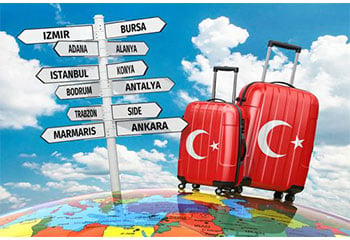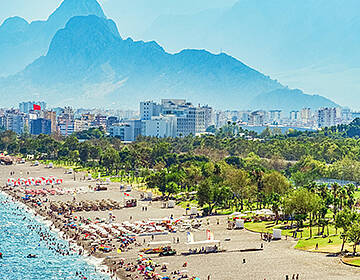Turkey Tourism 2023: The Vision
The Turkey Tourism 2023 Vision plan is an ambitious project by the Turkish government to be one of the top five countries in the world for tourist visitors and revenues. Given the competitiveness of the global travel industry and the extensive planning needed, some might say Turkey is scrambling after the impossible, yet they stand a good chance of achieving it. To understand why and how they can do it, we first must look at why they want to do it.
The World Trade Organisation says by 2030, 1.8 billion people will travel every year. Low prices, global connections, and up-to-date travel news at the top of our fingers on the internet means travel will not be a luxury, but an essential part of life.
Those 1.8 billion travelers will spend 7.2 trillion dollars on accommodation, food, entertainment, excursions, and flights, and Turkey wants a slice of the pie because it will contribute heavily towards its economy and employment, to name just a few benefits.
Whereas other sectors like imports, exports, energy, and finance can bring in the money, the fast-moving pace of the travel industry means the money is free-flowing, and more importantly, tourists are the great word of mouth advertisers. The benefits are just too enormous to ignore this opportunity but how can they achieve it?
Principal Strategies of the Turkey Tourism 2023 Vision Plan

1: Regional Recognition and Diversification
Rather than just promote the country as one destination offering the same attractions, the Turkish government has leveled down its tourism promotion to regional districts. Recognizing the individual characteristics of each region means every niche of tourism is available.
The Aegean and Mediterranean are ideal beach destinations however efforts have also played off to promote the gulet sailing industry of the Turkish Riviera. Ayder Plateau and Uzungol in the North East, are examples of Plateau tourism while Antalya is famous for its adventure sports. Tourism resorts in Antalya are a great reputation around the world.
Spa tourism took off in the Izmir district, while Istanbul is raking in dollars as a medical tourism destination with procedures like hair transplants and plastic surgery. Cappadocia promotes itself with beautiful and unique landscapes, and the cave hotels also make it a top honeymoon destination.
Food tourism has also thrived as each district highlights is regional classics such as olives from the Aegean, street food in Istanbul, cheese, and honey from Kars, or baklava from Gaziantep. Such is the geographical landscape, regional traditions, and history of Turkey, it has every niche of tourism to completely dominate the market.
2: Diversification of Nationalities
Although Turkish tourism started gaining popularity in the 1980s, for many years, it was only a favorite of the Brits, Russians, and Germans. Unfortunately, when regional differences occur such as in the shooting of the Russian jet in 2015, this can severely hamper the flow of one nationality as tourists.
For this reason, to ensure the sustainability of its tourism industry, Turkey is marketing itself across the globe. 2018 is the year of tourism in China and Turkey is also forging close relationships with the Indians, and Qataris. In recent years, Middle Eastern visitors have dramatically increased as they flock to areas such as Bursa and Yalova because they match their cultural beliefs and backgrounds. Turkey is laying out the welcome mat for everyone regardless of nationality or religion.
3: The PPP Business Model
In 2017, the Turkish government announced they are looking for more PPP business models to grow the tourism industry. The PPP business model stands for public-private partnership and involves sourcing out the financing and operation of establishments and infrastructure models.
One of the main benefits is cost does not sit on the budget and Turkey has been using this business model since the 1980s. The new Istanbul third airport is one such example, and several medical tourism establishments have been set up using PPP.
Finally, it is essential to recognize Turkish tourism has already achieved a lot. In 2014, before global events affected the travel industry, it was the sixth most visited destination in the world.
While the country has taken a knock in the years since then, many industry insiders are predicting it will be back on track in 2018 and set to achieve its Turkey Tourism 2023 Vision Plan with glory and ease.







